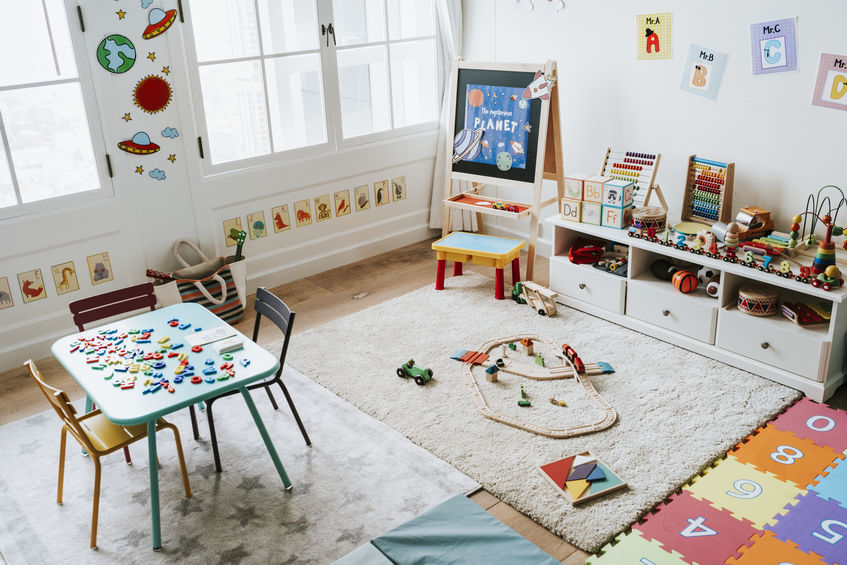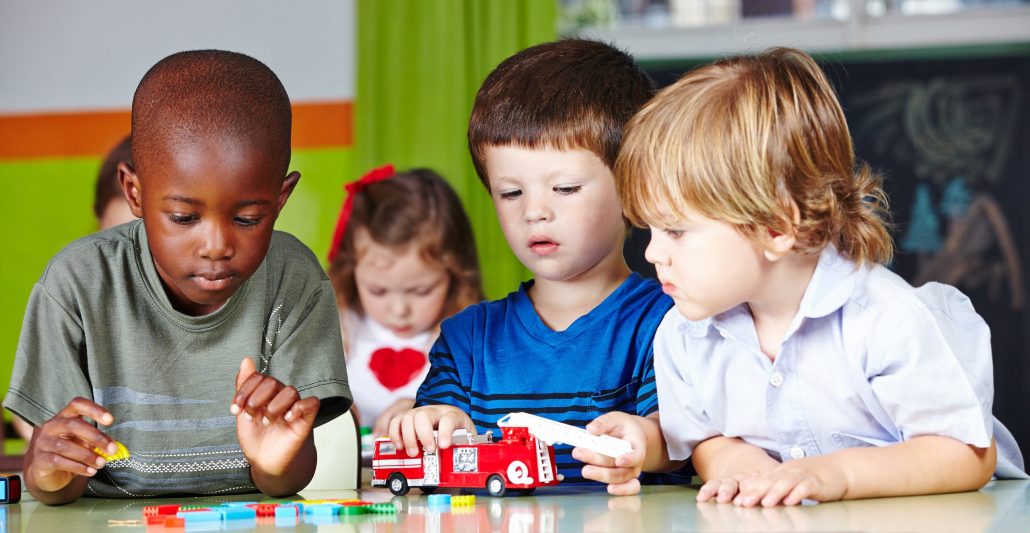Montessori Home
Tips on How to Become A Montessori Parent
As parents, we all want the best for our children. We strive to provide them with the tools and resources they need to succeed in life. One approach that has gained popularity over the years is the Montessori method of education. This approach emphasizes independence, practical life skills, and hands-on learning. But as a Montessori parent, you may be wondering how to implement this approach in your own home. In this blog, we will explore the concept of being a Montessori parent, and provide you with some tips and strategies to effectively incorporate this approach into your parenting style.
1. Understand the philosophy
Expand your knowledge of the Montessori philosophy and approach to education and child development by exploring a variety of resources. Diving into books and articles on the subject can provide you with valuable insights and perspectives. Additionally, consider attending parenting classes that focus on the Montessori approach to gain a deeper understanding and practical tools for implementing it in your own life. The more you educate yourself, the better equipped you will be to support your child’s growth and development.

2. Create a prepared environment
Creating a prepared environment is a crucial aspect of Montessori learning. It is the foundation upon which the entire Montessori methodology is built. The prepared environment serves as a guide for children to explore and learn at their own pace. It is a place where the child can feel safe, comfortable, and free to learn. In this blog post, we will discuss the importance of creating a prepared environment for Montessori learning. The environment plays a critical role in the development of a child. It is the foundation that shapes the child’s personality, behavior, and learning. Therefore, it is essential to create an environment that is conducive to learning. In a Montessori classroom, the environment is carefully planned and organized to promote self-directed learning. The materials are carefully selected and arranged to help children learn and explore independently.
The Montessori method emphasizes the importance of freedom and responsibility. A prepared environment allows children the freedom to choose and explore activities that interest them. They are free to move around and work on activities for as long as they want. The prepared environment also teaches children to be responsible for their learning. They learn to take care of the materials and keep the environment clean and organized.

A prepared environment is also aesthetically pleasing. The use of natural materials such as wood, glass, and metal creates a warm and inviting atmosphere. The colors used in the environment are calm and soothing, promoting a sense of tranquility. The use of natural light and plants also helps to create a peaceful environment that is conducive to learning.
In a Montessori classroom, the prepared environment is divided into different areas such as practical life, sensorial, language, math, and cultural studies. Each area contains materials that are specifically designed to help children learn and explore. For example, the practical life area contains materials that help children develop their fine motor skills and learn basic life skills such as pouring, cutting, and cleaning. The sensorial area contains materials that help children develop their senses such as touch, taste, smell, and sight. The language, math, and cultural studies areas contain materials that help children develop their academic skills.
The prepared environment is also designed to promote socialization and collaboration. Children are encouraged to work together and help each other. They learn to respect each other’s space and activities. They also learn to communicate with each other, share ideas and solve problems together.
3. Follow your child’s interests
As parents, we all want the best for our children. We want them to grow up happy, healthy, and successful. However, sometimes we may find ourselves putting too much pressure on our children to excel in academics and extracurricular activities. While these things are important, it is also essential to allow our children to explore their own interests and follow their curiosity. One of the best ways to do this is by observing your child and following their interests. Children have a natural curiosity about the world around them, and it is our job as parents to nurture that curiosity. By observing your child and paying attention to the things they enjoy, you can help guide them toward activities that will bring them joy and fulfillment.
It is also important to allow your child to choose their own activities. While you may have ideas about what your child should be doing, it is ultimately up to them to decide what they want to pursue. Giving your child the freedom to choose their own activities can help boost their self-esteem and encourage them to take ownership of their own lives.

When your child expresses an interest in something, it is important to take that interest seriously. Encourage them to explore their curiosity and provide them with the resources they need to do so. This could mean signing them up for a class or activity related to their interest, or simply providing them with books or other materials to learn more about the topic.
By allowing your child to explore their own interests, you are helping them develop important skills such as problem-solving, creativity, and critical thinking. These skills will serve them well throughout their lives, no matter what path they choose to take.
4. Encourage independence
Fostering Independence in Your Child: A Guide to Raising Self-Sufficient Kids As a parent, it’s natural to want to do everything for your child. After all, you want them to be safe, healthy, and happy. However, it’s important to remember that one of your ultimate goals as a parent is to raise an independent, self-sufficient adult. You want your child to be able to take care of themselves and succeed in the world, even when you’re not there to guide them. So, how can you foster independence in your child?
Let Them Dress Themselves
One easy way to encourage independence is to let your child dress themselves. Of course, this doesn’t mean sending them to school in an outfit that doesn’t match or is inappropriate for the weather. Rather, give them some choices and let them pick out their own clothes. Even if their choices aren’t your favorite, it’s important to let them have some control over their appearance. Plus, getting dressed independently will give them a sense of accomplishment and pride.
Have Them Prepare Their Own Snacks
Another way to encourage independence is to allow your child to prepare their own snacks. Depending on your child’s age, this could mean anything from pouring themselves a bowl of cereal to making a sandwich. Give them guidance when needed, but let them take the lead. This will not only help them develop important life skills, but it will also give them a sense of ownership over their food choices.
Teach Them to Clean Up After Themselves
Finally, it’s important to teach your child to clean up after themselves. This means everything from putting away toys to washing dishes. Encourage them to take responsibility for their messes and to contribute to the household chores. This not only helps them develop important life skills but also teaches them the value of hard work and responsibility.
5. Practice patience
Montessori parenting is a philosophy that prioritizes a child’s natural curiosity and love of learning, while also encouraging independence and self-motivation. One of the key principles of Montessori parenting is allowing children to work at their own pace. This means resisting the urge to interfere or rush children as they explore and learn. As parents, we often want to help our children succeed, and it can be tempting to step in and direct their activities. However, by taking a step back and allowing children to explore and learn on their own, we create an environment that fosters their natural sense of curiosity and independence.
One way to support your child’s independence is to create a space in your home where they can work and play on their own. Set up a designated area with age-appropriate toys and materials, and allow your child to choose what they want to play with and when. This helps them develop decision-making skills and encourages self-motivation.
Another way to support your child’s natural love of learning is to provide opportunities for hands-on exploration. This can include activities such as cooking, gardening, and building with blocks or Legos. By engaging children in these types of activities, we help them develop problem-solving skills and creativity.
Practicing patience is also key to Montessori parenting. It can be challenging to watch our children struggle or move slowly, but by allowing them to work at their own pace, we are creating a supportive environment that encourages growth and learning. Remember that every child develops at their own rate, and by embracing this, we can help our children reach their full potential.

In addition to these tips, it’s important to remember that Montessori parenting is a process. It takes time and effort to create an environment that supports independence and natural learning. By incorporating these principles into your parenting approach, you can create a nurturing and empowering environment that encourages your child’s natural love of learning and independence.
>> Read more: Setting up a Montessori Learning Environment in Your Home
